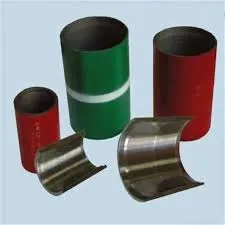- Afrikaans
- Albanian
- Amharic
- Arabic
- Armenian
- Azerbaijani
- Basque
- Belarusian
- Bengali
- Bosnian
- Bulgarian
- Catalan
- Cebuano
- Corsican
- Croatian
- Czech
- Danish
- Dutch
- English
- Esperanto
- Estonian
- Finnish
- French
- Frisian
- Galician
- Georgian
- German
- Greek
- Gujarati
- Haitian Creole
- hausa
- hawaiian
- Hebrew
- Hindi
- Miao
- Hungarian
- Icelandic
- igbo
- Indonesian
- irish
- Italian
- Japanese
- Javanese
- Kannada
- kazakh
- Khmer
- Rwandese
- Korean
- Kurdish
- Kyrgyz
- Lao
- Latin
- Latvian
- Lithuanian
- Luxembourgish
- Macedonian
- Malgashi
- Malay
- Malayalam
- Maltese
- Maori
- Marathi
- Mongolian
- Myanmar
- Nepali
- Norwegian
- Norwegian
- Occitan
- Pashto
- Persian
- Polish
- Portuguese
- Punjabi
- Romanian
- Russian
- Samoan
- Scottish Gaelic
- Serbian
- Sesotho
- Shona
- Sindhi
- Sinhala
- Slovak
- Slovenian
- Somali
- Spanish
- Sundanese
- Swahili
- Swedish
- Tagalog
- Tajik
- Tamil
- Tatar
- Telugu
- Thai
- Turkish
- Turkmen
- Ukrainian
- Urdu
- Uighur
- Uzbek
- Vietnamese
- Welsh
- Bantu
- Yiddish
- Yoruba
- Zulu
crossover drilling tool
The Role of Crossover Drilling Tools in the Oil and Gas Industry
In the ever-evolving landscape of the oil and gas industry, efficiency and adaptability are paramount. One critical component that has emerged to meet the demands of modern drilling operations is the crossover drilling tool. These specialized tools play a crucial role in ensuring successful drilling operations, especially in challenging environments where multiple drilling systems converge.
Crossover drilling tools are designed to facilitate the transition between different types of drilling equipment and systems. Whether moving from a traditional rotary drilling rig to a more advanced top drive system, or switching between various wellbore sizes and configurations, these tools provide the flexibility needed to optimize drilling efficiency and minimize downtime.
One of the primary benefits of crossover drilling tools is their ability to streamline operations. In traditional drilling setups, changing from one system to another often requires extensive modifications or even complete retooling of the drilling rig. This not only consumes valuable time but also incurs significant costs. Crossover tools eliminate the need for such drastic measures by allowing operators to seamlessly switch between different systems with minimal interruption. This means that drilling projects can proceed without the significant delays that typically accompany equipment changes.
Furthermore, crossover drilling tools are engineered to handle various drilling parameters, including pressure, temperature, and fluid dynamics. This adaptability is essential for operators who often encounter unpredictable geological conditions. By utilizing crossover tools, drillers can ensure that their equipment remains compatible with the specific demands of the wellbore, reducing the risk of equipment failure and enhancing overall safety.
crossover drilling tool

In addition to operational flexibility and efficiency, crossover drilling tools contribute to improved well construction. With the ability to customize drill string configurations, operators can achieve better control over the drilling process. This customization results in enhanced drilling accuracy, which is crucial for reaching targets effectively and avoiding costly accidents or re-drills.
Moreover, crossover drilling tools promote sustainability within the industry. By reducing operational downtime and increasing drilling precision, these tools help to minimize the environmental impact associated with oil and gas extraction. Shorter drilling times lead to less energy consumption and lower emissions, aligning with the industry's increasing focus on environmentally responsible practices.
As technology continues to advance, the design and functionality of crossover drilling tools are also expected to evolve. Innovations such as smart sensors and automated systems may further enhance their capabilities, allowing for real-time monitoring and adjustments during drilling operations. This will not only improve efficiency but also contribute to the overall safety and reliability of drilling projects.
In conclusion, crossover drilling tools represent a significant advancement in the oil and gas industry, addressing the need for flexibility, efficiency, and sustainability. By enabling seamless transitions between different drilling systems and enhancing overall drilling performance, these tools are essential for meeting the challenges of modern drilling operations. As the industry continues to innovate, crossover tools will remain a vital component of successful drilling strategies, facilitating the exploration and extraction of essential resources in an increasingly complex environment.
-
Tubing Pup Joints: Essential Components for Oil and Gas OperationsNewsJul.10,2025
-
Pup Joints: Essential Components for Reliable Drilling OperationsNewsJul.10,2025
-
Pipe Couplings: Connecting Your World EfficientlyNewsJul.10,2025
-
Mastering Oilfield Operations with Quality Tubing and CasingNewsJul.10,2025
-
High-Quality Casing Couplings for Every NeedNewsJul.10,2025
-
Boost Your Drilling Efficiency with Premium Crossover Tools & Seating NipplesNewsJul.10,2025







